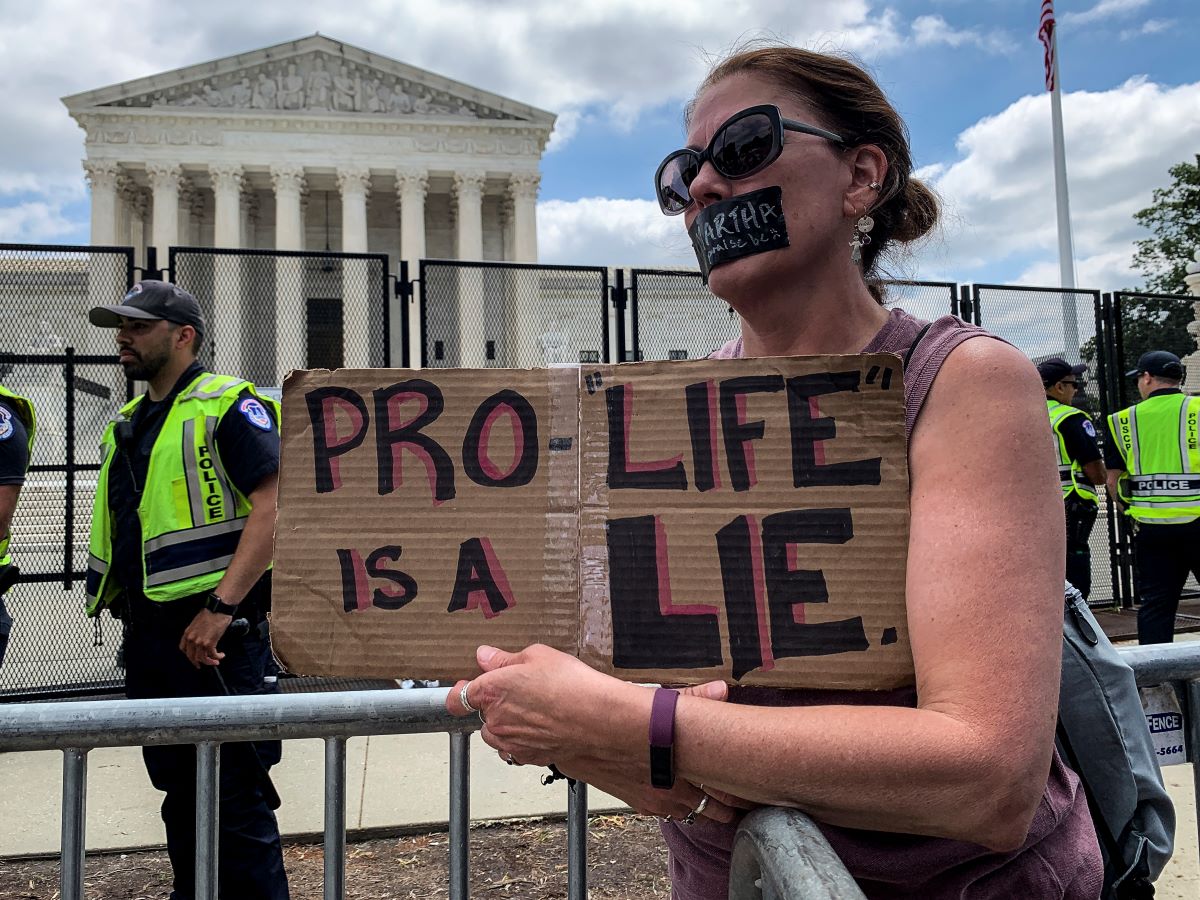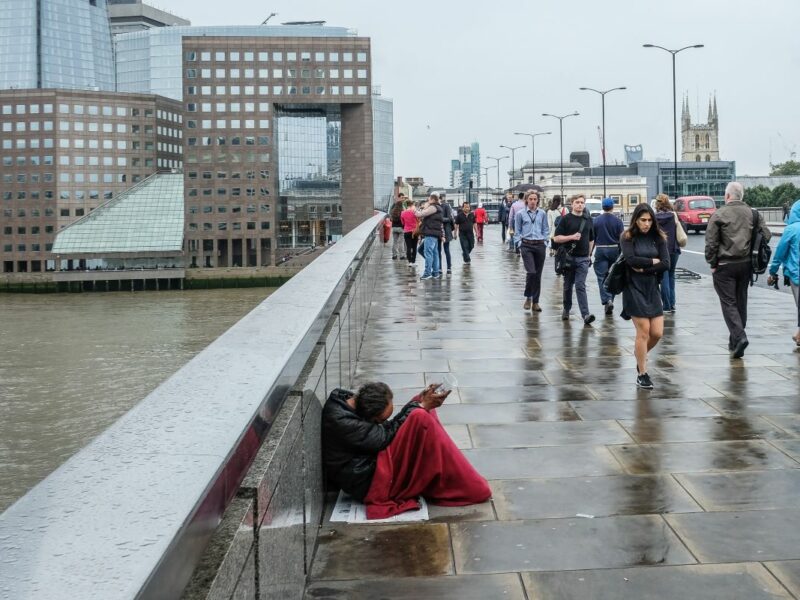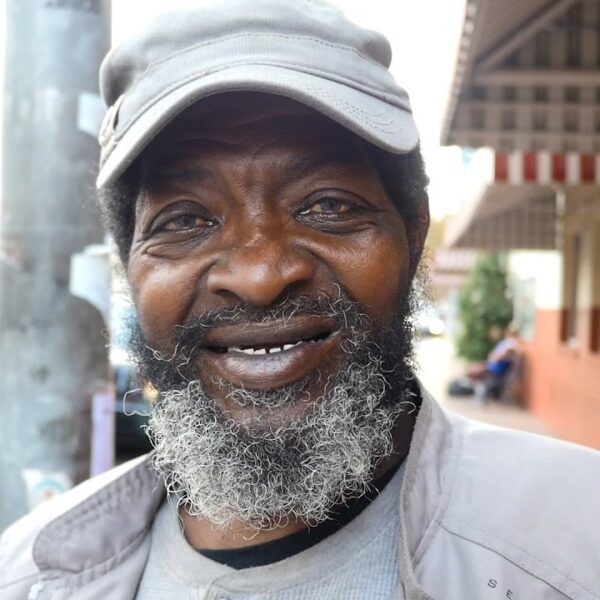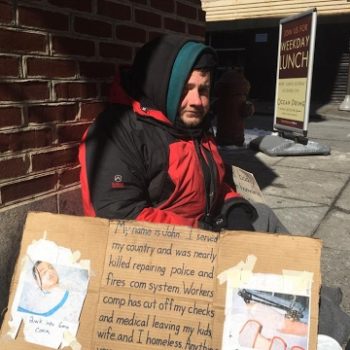Banning Abortions Actually Puts Pregnant Women at Higher Risk of Health Issues
During her third pregnancy, Natasha only had one prenatal checkup.
“When I started reaching out to providers about two months ago when I was approved for Medicare, I was told I was too high of a risk, and no one would see me because of how late I am in my pregnancy,” said Natasha. She was nine months pregnant when she spoke to Invisible People at the end of May. “I went to the hospital… once on April 29, and they told me the baby, and I are doing well.”
Like many pregnant women experiencing homelessness, Natasha has struggled to access care during her pregnancy.
According to the American College of Obstetrics and Gynecologists’ (ACOG) Committee on Health Care for Underserved Women’s Opinion on Health Care for Homeless Women, issued in October 2013 and reaffirmed in 2016, pregnant women experiencing unsheltered homelessness are more likely to suffer adverse birth outcomes than the general population. They’re nearly three times more likely to deliver prematurely, and their babies are nearly seven times more likely to have a low birth weight.
A lack of prenatal care is just one of the hurdles Natasha faces with this pregnancy. Having lived in her car for the better part of the last two years after leaving an abusive marriage, Natasha is struggling to find secure housing for herself, her baby, and her boyfriend. She also hopes to get custody of two other daughters, ages 6 and 3. Natasha is a scientist who once had a “dream job” at Procter & Gamble. Still, a car accident, PTSD, severe postpartum depression, OCD, and general anxiety disorder, coupled with the mental and emotional abuse she was dealing with in her marriage, forced her out.
According to the ACOG committee report, women and families represent the fastest-growing segment of the homeless population. Women experiencing homelessness are at higher risk of injury and illness than their housed counterparts and are less likely to obtain needed health care.
Barriers to Care
There are many reasons for that, not the least of which are logistical, according to Barbara DiPietro, Ph.D., senior director of policy for Health Care for the Homeless. She listed the following as a sample of reasons:
- Transportation
- Affordability
- Accessibility
- Needed Services
- Ability to get placed
- Take time off of work
- Paid leave to obtain care
- Paid leave to provide care for children
“For example, if you’re seeking treatment for opioid use disorder, it may be that the health centers in your community may not have [these services] or may not have the capacity,” DiPietro explained. “That forces you to seek a wider range to get the services you need.”
She noted that many vulnerable people—BIPOC, people experiencing homelessness, people with disabilities, and others—have not been treated well by medical professionals in the past.
“When people have had poor experiences at hospitals, in emergency rooms, in clinics, in lots of spaces where they feel judged, where they don’t feel they’ve gotten good quality care, have been actively discriminated against, or just where they didn’t feel welcome, all of that tells people that you don’t belong here—that not only alienates people from care. It also makes people feel like they don’t deserve good care,” DiPietro said.
That’s particularly true when you add pregnancy to the equation.
“People who are pregnant, alone, on the street, with other issues making their life very challenging, I don’t think it’s a tough sell that people are afraid to reach out. [They think] ‘What happens if I do that, and someone’s horrible to me?'” she said. “We have many patients who discovered they’re pregnant, and they’re absolutely overjoyed. That’s a natural response. And when you’re poor—especially if you’re homeless—there will be a judgment of, ‘Oh, you shouldn’t have a baby. You don’t have autonomy or agency in your life. You can’t make these decisions.’ Even being judged for the pregnancy itself is a barrier to seeking care… people feel like ‘My joy is not going to be shared.'”
Such an attitude may prompt some pregnant women to avoid medical care altogether, which can be especially dangerous.
“Not only are we concerned just about Mom and babies, but we’re concerned about what other health conditions haven’t been addressed—gestational diabetes, blood pressure, all those things that are real risks to your health, long-term chronic illnesses that need chronic care management,” DiPietro said.
The lasting consequences of maternity care are well-documented.
Nikita Mahtre summed up the results of several studies in the May 2021 bulletin for the National Partnership for Women and Families, “Homelessness Hurts Moms and Babies”:
- Pregnant women experiencing homelessness are significantly less likely to have a prenatal visit during the first trimester, breastfeed their child, and have a well-baby checkup than their housed counterparts.
- They’re significantly more likely to have various pregnancy-related conditions and complications, including high blood pressure, iron deficiency and other anemia, nausea and vomiting, hemorrhage, placental problems, and abdominal pain.
- One in five people who experienced homelessness the year before giving birth had an infant with low birth weight, a nearly 50 percent increase in risk compared to consistently housed people with otherwise similar characteristics.
- Newborn infants of people experiencing homelessness have longer stays in the hospital and were more likely to require intensive care than infants of consistently housed people.
- People who were homeless as infants are more likely to have an upper respiratory infection, other respiratory diseases, fever, allergy, injuries, developmental disorders, and asthma than those who were stably housed during infancy. They also have increased emergency department visits, hospitalizations, and health care costs.
Mahtre also noted that BIPOC communities are more likely to experience homelessness, and a disproportionate number of pregnant women experiencing homelessness are Black, Hispanic, and younger groups that the health care industry has historically marginalized.
“We talk a lot about patients having trust in the health care system, but what we need, I think, to be talking about is how does the health care system being trustworthy of patients’ trust,” DiPietro said.
Some agencies attempt to provide dignified care, regardless of people’s ability to pay for it.
Federally Qualified Health Centers (FQHCs), funded by the Health Resources and Safety Administration, are community-based health care centers that provide primary care services from birth to elderly care in underserved areas. They include Community Health Centers, Migrant Health Centers, Health Centers for Residents of Public Housing, and Health Care for the Homeless clinics.
“There are 300 Health Care for the Homeless programs in the country located in approximately 2,000 locations,” DiPietro said.
FQHCs are a “core safety net” in the U.S., DiPietro said. Some 29 million people obtained health care through the programs in 2021.
“These are safety-net clinics that provide comprehensive primary care, support services like outreach, case management, translation, health education, and stuff like that, as well as behavioral health,” DiPietro said. “They serve people without regard to insurance status or the ability to pay on a sliding fee scale.”
The End of Roe
Most FQHCs do not perform abortions, as they are federally subsidized. But some provide the offer through separate funding lines. Soon some of those clinics will lose that ability. The U.S. Supreme Court found in favor of the plaintiff in the landmark Dobbs v. Jackson Women’s Health Organization case on June 24, overturning decades of precedent set by the 1973 Roe v. Wade decision.
Doing so defies advice from doctors, public health experts, sociologists, economists, and other experts. Note these experts say not only is abortion in the United States safe but banning abortions actually puts pregnant women at higher risk.
The United States has one of the highest maternal mortality rates among developed countries. In fact, while maternal mortality declined in other countries between 2000 and 2017, it rose in the U.S.
The COVID-19 pandemic has compounded the problem, as disparities based on race continue to widen.
It will again be the most marginalized people—people of color and people living in poverty—that will be the hardest hit now that the right to choose has been revoked.
“We’re going to see a real tidal wave of problems that are going to disproportionately hit women who are most vulnerable,” DiPietro said. “Wealthy women will always be able to go to California or some other state, but poor folks are stuck.”
The Turnaway Study
The consequences of denying a wanted abortion were studied extensively by a team of researchers at the Bixby Center for Global Reproductive Health at the University of California, San Francisco, from 2008 to 2010.
Led by Dr. Diana Greene Foster, the so-called Turnaway Study is the only study to look at what happens when a woman is denied a wanted abortion. Previous research on abortion, which was limited, looked at women who’d terminated a pregnancy vs. women who’d completed a wanted pregnancy. This study compared women who were denied an abortion to those who were able to obtain one. It included women who had a more typical abortion experience (those who terminated their pregnancies in their first trimester), as well as women who sought abortions around states’ gestational limits.
Some were able to have the procedure because they were just under the limit. Others were turned away (hence the Turnaway Study) because they were past the limit.
In a book she later wrote on the Turnaway Study, Foster wrote that most abortions in the U.S.—over 90 percent—take place in the first trimester (the first 13 weeks). About 8 percent take place between 14 and 20 weeks, and for the most part, her research indicated most of those women didn’t realize they were pregnant.
“… more than half of the 200 second-trimester patients in our California study did not know they were pregnant until they had already passed the second trimester mark,” Foster wrote. “Many of these women never experienced pregnancy symptoms.”
Since many states restrict abortion in the second trimester, Foster wondered what happened to those women who were turned away, as well as those who just made the gestational deadline.
“In comparing women who received wanted abortions to those who are denied, I saw the potential to answer the hotly debated question Does abortion hurt women?” Foster wrote. “And, on the flip side, What are the harms from not being able to access a wanted abortion?”
Working with a diverse team that included public health experts, sociologists, epidemiologists, nurses, demographers, nurses, economists, doctors, and more, researchers recruited nearly 1,000 women from 30 facilities in 21 states who sought an abortion between 2008 and 2010. Researchers contacted these women every six months for five years and asked them a series of questions. Read more about the study’s methodology here. The original research produced 50 peer-reviewed papers in medical and social journals.
Those analyses concluded, simply, that receiving an abortion does not harm women. The opposite is true: being denied an abortion can hurt women. Women who were denied a wanted abortion and then went on to give birth:
- Were more likely to below the federal poverty level as long as four years after giving birth
- Were less likely to have enough money to cover basic living expenses
- Were less likely to pursue long-term goals
- Were more likely to stay with abusive partners
- Were more likely to suffer from anxiety and loss of self-esteem
- Had a lower credit score and higher debt and were more likely to have an eviction or bankruptcy on their financial record
- Reported more life-threatening complications like eclampsia and postpartum hemorrhage
- Reported more chronic pain and health issues
While no women died after an abortion, two who were part of the study died after giving birth.
“It’s not surprising that abortion is safer than birth, based on the medical literature, but that we actually had maternal deaths in a sample of around 200 births is shocking,” Foster said.
Denying women a wanted abortion also affects their children:
- Existing children are more likely to fall behind in child development
- Children born as a result of a denied abortion are more likely to live in poverty than a child born to a woman who has an abortion and then chooses to get pregnant again later
- Carrying an unwanted pregnancy to term is associated with poorer maternal bonding, such as feeling trapped or resenting the baby, with the child born after abortion denial, compared to a child born to a woman who has an abortion and then chooses to get pregnant again later
Foster said the point of all this research is “to examine the effect of abortion on women’s lives and the immediate and far-reaching consequences of laws that restrict access to it.”
“Before our judges and policymakers consider eroding abortion rights or criminalizing abortion, I want them—and voters and others responsible for elevating them to power—to understand what banning abortion would mean for women and children,” she wrote in her book.
But she’s not surprised to see that evidence ignored by the Supreme Court decision.
“Abortion policy has been based on ideology and not science. It’s based on political calculations rather than empirical assessments of the impact on real people,” she said. “If Roe is overturned, privileged women—those with money, support, vehicles, computers, credit cards, health, freedom and ability to travel—will be able to get their abortions. Less privileged women will give birth with all the hardships shown in the Turnaway Study.”
DiPietro said she’s concerned the end of Roe is just the beginning.
“I just worry that the policy direction is going to go far beyond just abortion and access to reproductive care,” she said. “I’m really concerned about the subsequent policy decisions that will follow from this. When we talk about civil and human rights, even to the marginal degree that we’ve been able to achieve them, I worry that we’re going to start rolling back those pieces. And everything always disproportionately impacts poor folks. It leaves the most vulnerable people at the highest risk of being harmed.”













